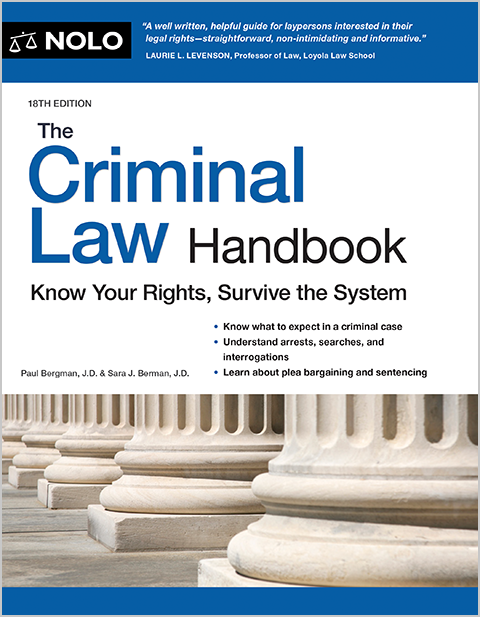A child’s family must meet the SSI income and resource limitations, but Social Security won't count some of the parents' income.
Children with disabilities can sometimes qualify for Supplemental Security Income (SSI) benefits from the Social Security Administration (SSA). To be eligible, the child with the disability must meet the SSI income limit, which means the child's family must have a low income and few resources.
Social Security attributes some of the parents' income to the child for the purpose of deciding SSI eligibility, in a process called "deeming." The SSA will deem (attribute) part of your income to your child if the child is younger than 18, unmarried, and either lives with you or is away at school, but still under your care.
Social Security will also count stepparents' income if the stepparent lives in the same home with the child and a natural or adoptive parent. But not all parental income counts towards the SSI limit.
- Navigating Parental Income Limits for Child SSI
- What Are the Family Income Limits for a Child on SSI?
- How Social Security Calculates Your Child's SSI Benefit Amount
- How Does Social Security Treat Child Support?
- When Does Social Security Stop Counting Parental Income for a Child?
- Does the SSA Count Parental Income for Disabled Children Over Age 18?
Navigating Parental Income Limits for Child SSI
Social Security uses income deeming to determine a child's eligibility for Supplemental Security Income and, more specifically, to calculate the child's benefit amount. (20 C.F.R. 416.1165.) The SSA has a complicated formula for deeming part of a parent's income to a child. After determining the amount of the parent's income that will count toward the child, the SSA then compares the child's income to the SSI disability income limits.
The SSA also uses the same formula to reassess a child's SSI eligibility monthly. Social Security recalculates the deemed amounts for the parents' income each month using the following process.
Calculating the Parents' Income
First, Social Security adds up the parents' gross earned and unearned income. Earned income includes your wages from work and self-employment income from running your own business or freelancing.
Unearned income includes money you receive from non-work-related sources, such as Social Security or veterans benefits, gifts, spousal support, and unemployment benefits.
But the SSA doesn't count certain kinds of income for SSI eligibility, and won't deem any of the following to be available to a child:
- food stamps (SNAP benefits)
- welfare (TANF) payments
- SSI benefits
- VA pension payments
- state and local need-based assistance
- disaster relief
- income needed to pay child support or alimony, if court-ordered, and
- income tax refunds (but tax refunds can put you over the SSI asset limit if you hold onto the money too long).
Accounting for the Living Expenses of Family Members
Next, Social Security subtracts a portion from the parents' countable earned and unearned income to account for living expenses for the parent(s) and any non-disabled children in the home. The remaining income is then deemed to be available to the eligible child (the child with a disability).
To make this calculation, Social Security starts with the federal benefit rate (FBR), which is the maximum SSI benefit amount. For 2025, the FBR for couples is $1,450, and for individuals, it's $967. The living allowance for each non-disabled child equals the difference between the individual's and the couple's FBR ($1,450 - $967 = $483).
So the SSA deducts a $483 living allowance for each non-disabled child in the household from the parents' total countable income. This allowance is first deducted from your unearned income (such as alimony) until none remains. Then, Social Security deducts any remaining portion from your earned income (wages).
Social Security next deducts $20 from your unearned income, or, if there's no more unearned income to count, from your earned income. Then, Social Security deducts $65 from the parents' combined earned income and divides the remaining total earned income in half.
Then, to account for parental living expenses, Social Security subtracts the federal SSI benefit rate from the remaining parental income—which (in 2025) is $967 if the child lives with only one parent and $1,450 if the child lives with both parents or one parent and a stepparent. The remaining countable income is deemed to the child for SSI purposes.
If only one disabled child lives in the household, Social Security deems all the remaining countable income to that child. If more than one child who has a disability (and is under 18 and receiving SSI) lives in the home, Social Security takes the total countable income and divides it equally among those children.
A child with countable income above the federal benefit rate ($967 in 2025) won't qualify for SSI. But, because of the living allowances and other deductions allowed, a child can have a total family income well above the FBR and still meet the SSI income requirements, as demonstrated by the chart mentioned below.
What Are the Family Income Limits for a Child on SSI?
The formula that the SSA uses to calculate deemed income for children applying for SSI means the child's family can earn more than the FBR without disqualifying the child. How much more you can have depends on the size of your family and whether your income is earned income or unearned income.
For example, in 2025, a disabled child from a single-parent household with one non-disabled sibling can qualify for SSI if the family has an unearned income of $2,457 per month or less or earned income of $4,476 or less. Or, if a disabled child is from a family with two parents and three non-disabled children, the disabled child will be financially eligible for SSI with a household income of $3,906 (unearned income only) or $6,408 (earned income only).
Here are the disabled child's income limits based on family size:
|
Number of |
Earned Income |
Unearned Income |
||
|
One Parent |
Two Parents |
One Parent |
Two Parents |
|
|
0 |
$3,993 |
$4,959 |
$1,974 |
$2,457 |
|
1 |
$4,476 |
$5,442 |
$2,457 |
$2,940 |
|
2 |
$4,959 |
$5,925 |
$2,940 |
$3,423 |
|
3 |
$5,442 |
$6,408 |
$3,423 |
$3,906 |
|
4 |
$5,925 |
$6,891 |
$3,906 |
$4,389 |
How Social Security Calculates Your Child's SSI Benefit Amount
If your child or teen has any deemed income, Social Security performs a separate income calculation for the child to determine the benefit amount. Social Security treats a parent's deemed income as unearned income for the child in these calculations.
If your child has no earned income (income from the child's own work), Social Security simply calculates the child's SSI benefit using the parent's deemed income (considered the child's unearned income). Social Security subtracts the $20 deduction from the child's unearned income. What remains is then subtracted from the current maximum monthly SSI amount ($967 in states with no SSI supplement). The balance is the child's SSI benefit for the month.
How Does Social Security Treat Child Support?
If the household receives child support on behalf of the disabled child, Social Security treats it as the child's unearned income. But only two-thirds of the total monthly child support is countable income for SSI purposes.
Also, the SSA only looks at child support actually received, so if the non-custodial parent fails to pay support, it won't affect your child's SSI benefit.
Learn more about how Social Security calculates SSI payments.
When Does Social Security Stop Counting Parental Income for a Child?
Changes to your family's income and living situation can affect how Social Security treats your income for SSI purposes. For instance, if one parent dies or permanently leaves the home the disabled child lives in, Social Security will stop deeming that parent's income the month after the change.
Social Security will also stop deeming parental income in the following situations:
- the child moves to a medical care facility
- the parent becomes eligible for SSI because of their own disability, or
- the child turns 18.
Likewise, if you're a single parent raising a child receiving SSI and you remarry, Social Security will include your new spouse's income in the deeming calculation.
Does the SSA Count Parental Income for Disabled Children Over Age 18?
When disabled children turn 18, Social Security considers them adults. There are disability benefits available for disabled adult children, but they're not based on your income, and children can qualify only if their parents are eligible for Social Security benefits. When your child reaches age 18, the SSA will do an "age 18 redetermination" to see if your child is still eligible for benefits.
Social Security doesn't deem parental income for children over 18 who are receiving SSI. But when disabled adult children live with their parents and pay no rent, Social Security decreases their SSI benefit by one-third to account for the free room and board (considered "in-kind income"). For this reason, some parents charge their children rent.
Learn more about what counts as in-kind income for SSI purposes.
- Navigating Parental Income Limits for Child SSI
- What Are the Family Income Limits for a Child on SSI?
- How Social Security Calculates Your Child’s SSI Benefit Amount
- How Does Social Security Treat Child Support?
- When Does Social Security Stop Counting Parental Income for a Child?
- Does the SSA Count Parental Income for Disabled Children Over Age 18?

